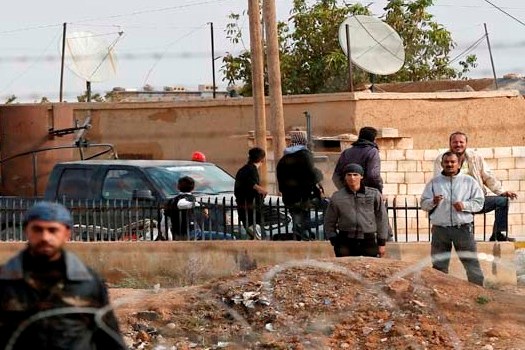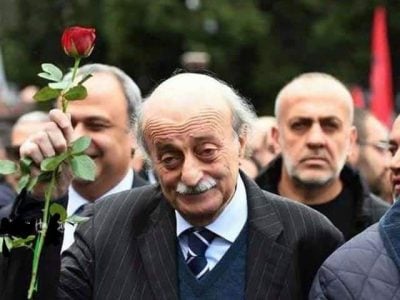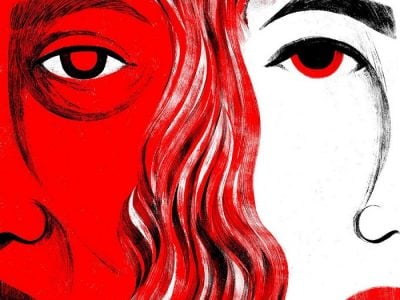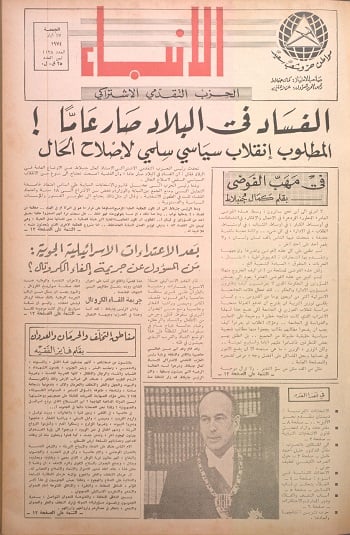The Horror! The Horror!
Roger Cohen / New York Times
19 نوفمبر 2014

What exactly does the nightmare of the beheading of another American, Peter Kassig, by Islamic State consist of?
There is, of course, the image itself. In Kassig’s case a severed blood-smeared head appears between the feet of a hooded killer. We have seen, in other executions, the knife applied to the throat, the broken pliant victims, the left-handed sawing motion; and we have heard the dead, flat voice of the swaggering executioner. So we scarcely need to imagine how the life of this young and idealistic American, an aid worker, a recent convert to Islam, ended.
Peter Kassig with a truck filled with supplies for Syrian refugees in an undated photograph provided by the Kassig family.
Obama Calls Islamic State’s Killing of Peter Kassig ‘Pure Evil’NOV. 16, 2014
Yet imagination will not be stilled. It is tugged into the vortex of the prisoners’ suffering, feeding on details of how they were waterboarded and otherwise tortured, troubled by the mirror-image orange jump suits and the way these Facebook-savvy medieval killers riff off (and recruit through) the dark-side deviations of America’s great post-9/11 disorientation. The evil of Islamic State is evident not least in its cleverness.
Just as we condensed the slaughter of September, 2001, into three digits, the better to inure ourselves, so now we succumb to Monty-Pythonesque banality in dubbing the Islamic State executioner “Jihadi John:” a little alliteration to alleviate anguish.
Again, we must imagine — that one minute this “Jihadi John” was struggling to get by, and get accepted, in drizzly England, unemployed with a mortgage to pay and a chip on his shoulder, and the next he stands in brilliant Levantine sunlight, where everything is clear and etched, at the vanguard of some Sunni Risorgimento intent on subjecting the world to its murderous brand of Wahhabi Islam. He has become part of something bigger. He has a mission. He has license to kill infidels (and even converts to Islam like Kassig) in the name of his faith. He is a revolutionary full of the certainties of that calling.
How many more like him are out there, waiting to be lured from a Bradford pub, or the ghettoized suburbs of some French town, or a fractured Libya?
Perhaps this question begins to get at the true nature of the nightmare. Horrific as the images of five executions have been, they cannot in themselves explain the extent of the reaction in the West. Our societies are, after all, inured through movies and video games to brutal violence. It is unremarkable.
What is unbearable, in fact, is the feeling, 13 years after 9/11, that America has been chasing its tail; that, in some whack-a-mole horror show, the quashing of a jihadi enclave here only spurs the sprouting of another there; that the ideology of Al Qaeda is still reverberating through a blocked Arab world whose Sunni-Shia balance (insofar as that went) was upended by the American invasion of Iraq.
And more: that the loss of 4,500 American combat troops in Iraq and more than 100,000 Iraqi lives produced no victory or clarity, but only a broken society and country; that the Arab Spring, which promised a way out of the mutually reinforcing confrontation of quasi-military dictatorship and political Islam, ended (outside Tunisia) in frustration and a revenge of the extremists; that “Jihadi John,” for now, has the upper hand on “moderate Mohammed.”
The nightmare, in short, has less to do with the barbaric image itself than with the feeling of humiliation and powerlessness and déjà vu and exhaustion that it triggers.
President Obama has vowed to “destroy” Islamic State. But even if that were achieved, and for now the means deployed do not seem commensurate with the objective, in what metastasized configuration would Islamic State’s ideas resurface?
There is no reason, in the light of the aborted attempts to define a new sort of post-sectarian citizenship in societies across the region, to think that the Arab incubator of violent Islamist extremism will diminish in fertility. Youth allied to frustration allied to a decade of conflict do a powerful death wish make.
Daniel Bolger, an American general in the wars of Iraq and Afghanistan, has written a book called “Why We Lost.” In it he says, without equivocation, “I am a United States Army general, and I lost the Global War on Terrorism.” And so all that American blood and treasure end not with a whimper but with a declarative sentence.
But what was the aim of this war? If it was to keep America safe, it cannot be deemed a failure. If it was to remake the societies of Iraq and Afghanistan, and remove the terrorist threat to the United States, it fell far short. Islamic State’s executions summon from the American subconscious a desperate sense of having been lured into the trap of overreach.
The nightmare is many-layered. Kurtz’s dying words — “The Horror! The Horror!” — in Joseph Conrad’s “Heart of Darkness” may be interpreted in several ways, but none of them can deny his 11th-hour perception of the immense forces beyond his control and, in the end, his comprehension.
 عن أمل جنبلاط المتجدد: لبنان يستحق النضال
عن أمل جنبلاط المتجدد: لبنان يستحق النضال
 صحافيون أم عرّافون!
صحافيون أم عرّافون!
 ماذا يجري داخل أروقة بيت الكتائب المركزي؟
ماذا يجري داخل أروقة بيت الكتائب المركزي؟


 عن الخرائط التي تُرسم والإتفاقات التي تتساقط!
عن الخرائط التي تُرسم والإتفاقات التي تتساقط!
 “الإنحراف في الحياة”/ بقلم كمال جنبلاط
“الإنحراف في الحياة”/ بقلم كمال جنبلاط
 هاشتاغ #صار_الوقت يحل أولاً في حلقة جنبلاط
هاشتاغ #صار_الوقت يحل أولاً في حلقة جنبلاط
 طاولة نقاش عن أزمة الصحافة في جامعة AUST
طاولة نقاش عن أزمة الصحافة في جامعة AUST
 عبدالله: ليظهر لنا وزير مكافحة الفساد حرصه في صفقات البواخر والفيول
عبدالله: ليظهر لنا وزير مكافحة الفساد حرصه في صفقات البواخر والفيول
 عبدالله: غريب أمر وزارة مكافحة الفساد!
عبدالله: غريب أمر وزارة مكافحة الفساد!

 Comment to Uri Avnery: How Sad What Is Looming Ahead
Comment to Uri Avnery: How Sad What Is Looming Ahead
 “Not Enough!”
“Not Enough!”
 … لمن لم يقرأ يوسف البعيني/ بقلم وسام شيّا
… لمن لم يقرأ يوسف البعيني/ بقلم وسام شيّا
 كمال جنبلاط في مولده الأول بعد المائة: تعاليمه وأفكاره ما زالت الحلّ/بقلم عزيز المتني
كمال جنبلاط في مولده الأول بعد المائة: تعاليمه وأفكاره ما زالت الحلّ/بقلم عزيز المتني
 رئيس حزب/ وليس (… سابقاً)/ بقلم د. خليل احمد خليل
رئيس حزب/ وليس (… سابقاً)/ بقلم د. خليل احمد خليل
 التوازن السياسي في لبنان
التوازن السياسي في لبنان
 لبنان… مشاريع انقلابية مؤجلة
لبنان… مشاريع انقلابية مؤجلة
 جنبلاط وحَمَلة أختام الكاوتشوك
جنبلاط وحَمَلة أختام الكاوتشوك
 Le Liban est un symbole de tolérance
Le Liban est un symbole de tolérance
 Our Automated Future
Our Automated Future
 The True Origins of ISIS
The True Origins of ISIS
 Les Misérables vs. Macron
Les Misérables vs. Macron
 عذراً أيها المعلم/ بقلم مهج شعبان
عذراً أيها المعلم/ بقلم مهج شعبان
 رساله الى المعلم / بقلم ابو عاصم
رساله الى المعلم / بقلم ابو عاصم
 إلى روح القائد والمعلم كمال جنبلاط/ بقلم أنور الدبيسي
إلى روح القائد والمعلم كمال جنبلاط/ بقلم أنور الدبيسي
 أسرار وعناوين الصحف ليوم الجمعة 14 كانون الاول 2018
أسرار وعناوين الصحف ليوم الجمعة 14 كانون الاول 2018














